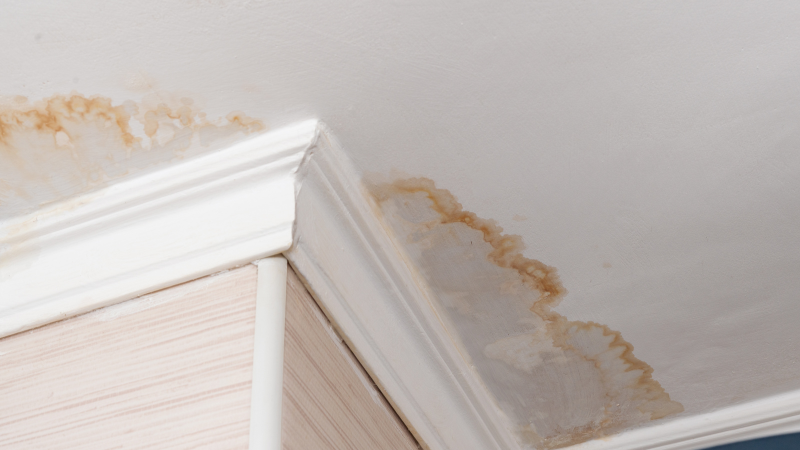How to Help Prevent Water Damage in Your Bathroom
How to Help Prevent Water Damage in Your Bathroom
Blog Article
Presented here down the page you can find additional reliable insights around How to Fix a Water Damage Bathroom.

The shower room is exceptionally vulnerable for moist build-up as well as possible water damages due to the constant use water in it. This article offers easy assessment methods to assist finding water damages threats.
The frequent use of water in the bathroom makes it incredibly vulnerable for moist accumulation and potential water damage. By examining it routinely, you can reduce water related damages.
The adhering to collection of examinations is very easy to carry out as well as ought to be done when in every three months in order to keep your restroom in good shape and to prevent potential water problems brought on by the bath tub, the shower, pipeline joints as well as plumbing, sinks, cabinets, and the toilet
Do not neglect executing these examinations and also be complete while doing them. Bear in mind that these easy evaluations can save you a great deal of money by giving early indications for water damage
Bath tub and also Shower
The shower as well as tub require unique focus as well as maintenance. Check the ceramic tiles as well as replace if broken. Ensure that there is no missing cement between the tiles. Evaluate and also replace cracked caulking at joints where the wall surfaces satisfy the floor or the bath tub. Blocked drains and pipelines issues will protect against the tub from drying and also may indicate major problems under the tub. Speak with a specialist right away to prevent architectural damage. Pay attention to stainings or soft areas around the bath tub wall surfaces as they might indicate an interior leak.
Plumbing
Signs for water damages are hard to identify because most pipelines are installed inside the wall surfaces.
Pay special focus to flooring as well as wall surfaces moisture as well as discolorations as they may suggest an undetectable plumbing trouble. Examine moisture levels in adjacent areas as well.
Sinks as well as Cabinets
Sinks and cabinets are subjected to dampness and also humidity daily as well as are usually forgotten. Inspect frequently under the sink as well as on the kitchen counter over it. Fix any kind of drip in the trap as it might suggest drain issues. Check out the sink, slow draining pipes might show a blocked drain. Replace sink seals if they are cracked or loose.
The Toilet
The bathroom is a prone water joint. Examine the water lines and search for leaks around the bathroom seat, in the tube, and under the water tank. If you discover any kind of indications of wetness on the flooring around the commode, look for leaks in the toilet rim and storage tank seals.
Know that hanging commode dish antiperspirants increases the chances for obstructions.
TIPS TO PREVENT WATER DAMAGE IN THE BATHROOM
The average household uses approximately 80-100 gallons of water per person per day. For a family of 4, that's almost 2,500 gallons of water a week! The largest portion of this consumption comes from bathroom use. Flushing the toilet uses the most water, followed by taking a shower or bath. With that much water running through the home, water damage in the bathroom is bound to happen. Knowing how to spot signs of a water leak is essential to preventing long-term damage. This guide provides you with tips to reduce the impact of water damage on your bathroom.
CAUSES OF BATHROOM WATER DAMAGE
Pipe breaks are the most common cause of water damage we see in our daily jobs. The age of a pipe plays a large role in a pipe break as well as corrosion. Over time, the metal begins to break down, allowing water to escape. Frozen pipe breaks are also a concern in the winter months. Toilet overflows caused by paper products or children flushing inappropriate items. Degraded caulking around the toilet or bathtub can allow water seepage, sometimes behind the fixture, into the subfloor or walls. Condensation forms when the water in a pipe is cooler than the air temperature. Beads of water form on the exterior of the pipes, sometimes so much so that the water begins to drip and pool below. Sink or shower backups created by poor drainage. HOW TO PREVENT WATER DAMAGE IN YOUR BATHROOM
Inspect your toilet supply line for worn or frayed hoses and replace them as needed. Winterize your plumbing to prevent a frozen pipe break. Use vent fans to prevent condensation that can lead to mold growth. Routinely check and replace degraded caulking around your toilet or bathtub. Increase the temperature in your toilet tank and insulate your pipes during the warm summer months to keep condensation from forming. Use child safety locks on the toilets. Flush only toilet paper. "Flushable" wet wipes are actually not good for your plumbing system. Additionally, feminine hygiene products should not be flushed. Prevent water from escaping the tub or shower. Make sure shower curtains are in good condition. Inspect shower doors and replace the seal strip if necessary. Wipe up any water that accumulates on the floor and use bath mats. Water left to sit can cause damage to the tiles and flooring. Refrain from using bath products containing heavy oils to avoid a clogged drain.

We were shown that write-up about Preventing Water Damage in the Bathroom from someone on another domain. Those who enjoyed our blog posting plz be sure to share it. I value reading our article about Looking for Signs of Water Damage in the Bathroom.
Browse Website Report this page